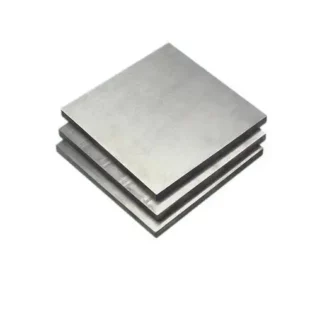Die hochaufl?sende Transmissionselektronenmikroskopie (HRTEM oder HREM) ist der Phasenkontrast (der Kontrast von hochaufl?senden elektronenmikroskopischen Bildern wird durch die Phasendifferenz zwischen der synthetisierten projizierten Welle und der gebeugten Welle gebildet. Sie wird als Phasenkontrast bezeichnet.) Mikroskopie, die ergibt eine atomare Anordnung der meisten kristallinen Materialien.
High-resolution transmission electron microscopy began in the 1950s. In 1956, JWMenter directly observed parallel strips of 12 ? copper phthalocyanine with a resolution of 8 ? transmission electron microscope, and opened high-resolution electron microscopy. The door to surgery. In the early 1970s, in 1971, Iijima Chengman used a TEM with a resolution of 3.5 ? to capture the phase contrast image of Ti2Nb10O29, and directly observed the projection of the atomic group along the incident electron beam. At the same time, the research on high resolution image imaging theory and analysis technology has also made important progress. In the 1970s and 1980s, the electron microscope technology was continuously improved, and the resolution was greatly improved. Generally, the large TEM has been able to guarantee a crystal resolution of 1.44 ? and a dot resolution of 2 to 3 ?. HRTEM can not only observe the lattice fringe image reflecting the interplanar spacing, but also observe the structural image of the atom or group arrangement in the reaction crystal structure. Recently, Professor David A. Muller’s team at Cornell University in the United States used laminated imaging technology and an independently developed electron microscope pixel array detector to achieve a spatial resolution of 0.39 ? under low electron beam energy imaging conditions.
Gegenw?rtig sind Transmissionselektronenmikroskope im Allgemeinen in der Lage, HRTEM durchzuführen. Diese Transmissionselektronenmikroskope werden in zwei Typen eingeteilt: hochaufl?send und analytisch. Das hochaufl?sende TEM ist mit einem hochaufl?senden Objektivpolstück und einer Membrankombination ausgestattet, wodurch der Neigungswinkel des Probentisches klein wird, was zu einem kleineren sph?rischen Aberrationskoeffizienten des Objektivs führt. w?hrend das analytische TEM für verschiedene Analysen eine gr??ere Menge ben?tigt. Der Neigungswinkel des Probentisches, so dass der Objektivlinsen-Polschuh anders verwendet wird als der hochaufl?sende Typ, wodurch die Aufl?sung beeinflusst wird. Im Allgemeinen hat ein hochaufl?sendes TEM mit 200 kev eine Aufl?sung von 1,9 ?, w?hrend ein analytisches TEM mit 200 kev eine Aufl?sung von 2,3 ? hat. Dies hat jedoch keinen Einfluss auf das hochaufl?sende analytische TEM-Bild.

As shown in Fig. 1, the optical path diagram of the high-resolution electron microscopy imaging process, when an electron beam with a certain wavelength (λ) is incident on a crystal with a crystal plane spacing d, the Bragg condition (2dsin θ = λ) is satisfied, A diffracted wave is generated at an angle (2θ). This diffracted wave converges on the back focal plane of the objective lens to form a diffraction spot (in an electron microscope, a regular diffraction spot formed on the back focal plane is projected onto the phosphor screen, which is a so-called electron diffraction pattern). When the diffracted wave on the back focal plane continues to move forward, the diffracted wave is synthesized, an enlarged image (electron microscopic image) is formed on the image plane, and two or more large objective lens pupils can be inserted on the back focal plane. Wave interference imaging, called high-resolution electron microscopy, is called a high-resolution electron microscopic image (high-resolution microscopic image).
Wie oben erw?hnt, ist das hochaufl?sende elektronenmikroskopische Bild ein phasenkontrastmikroskopisches Bild, das durch Durchleiten des durchgelassenen Strahls der Brennebene der Objektivlinse und der mehreren gebeugten Strahlen durch die Objektivpupille aufgrund ihrer Phasenkoh?renz erzeugt wird. Aufgrund des Unterschieds in der Anzahl der gebeugten Strahlen, die an der Bildgebung teilnehmen, werden hochaufl?sende Bilder mit unterschiedlichen Namen erhalten. Aufgrund der unterschiedlichen Beugungsbedingungen und Probendicke k?nnen hochaufl?sende elektronenmikroskopische Aufnahmen mit unterschiedlichen Strukturinformationen in fünf Kategorien unterteilt werden: Gitterstreifen, eindimensionale Strukturbilder, zweidimensionale Gitterbilder (Einzelzellenbilder), zweidimensionale Strukturbild (atomares Bild: Kristallstrukturbild), spezielles Bild.
Gitterstreifen: Wenn ein Transmissionsstrahl auf der hinteren Brennebene von der Objektivlinse ausgew?hlt wird und sich ein Beugungsstrahl gegenseitig st?rt, wird ein eindimensionales Streifenmuster mit einer periodischen ?nderung der Intensit?t erhalten (wie durch das schwarze Dreieck in gezeigt) Fig. 2 (f)) Dies ist der Unterschied zwischen einem Gitterstreifen und einem Gitterbild und einem Strukturbild, bei dem der Elektronenstrahl nicht genau parallel zur Gitterebene sein muss. Tats?chlich werden bei der Beobachtung von Kristalliten, Niederschl?gen und dergleichen Gitterstreifen h?ufig durch Interferenz zwischen einer Projektionswelle und einer Beugungswelle erhalten. Wenn ein Elektronenbeugungsmuster einer Substanz wie Kristallite fotografiert wird, erscheint ein Anbetungsring, wie in (a) von Fig. 2 gezeigt.

Eindimensionales Strukturbild: Wenn die Probe eine bestimmte Neigung aufweist, so dass der Elektronenstrahl parallel zu einer bestimmten Kristallebene des Kristalls einf?llt, kann sie das in Fig. 2 (b) gezeigte eindimensionale Beugungsbeugungsmuster erfüllen ( symmetrische Verteilung in Bezug auf den Transmissionspunkt) Beugungsmuster). In diesem Beugungsmuster unterscheidet sich das hochaufl?sende Bild, das unter der optimalen Fokusbedingung aufgenommen wurde, von dem Gitterstreifen, und das eindimensionale Strukturbild enth?lt die Information der Kristallstruktur, dh das erhaltene eindimensionale Strukturbild, wie gezeigt in Fig. 3 (a Ein hochaufl?sendes eindimensionales Strukturbild des gezeigten supraleitenden Oxids auf Bi-Basis.
Two-dimensional lattice image: If the electron beam is incident parallel to a certain crystal ribbon axis, a two-dimensional diffraction pattern can be obtained (two-dimensional symmetric distribution with respect to the central transmission spot, shown in Fig. 2(c)). For such an electron diffraction pattern. In the vicinity of the transmission spot, a diffraction wave reflecting the crystal unit cell appears. In the two-dimensional image generated by the interference between the diffracted wave and the transmitted wave, a two-dimensional lattice image showing the unit cell can be observed, and this image contains information on the unit cell scale. However, information that does not contain an atomic scale (into atomic arrangement), that is, a two-dimensional lattice image is a two-dimensional lattice image of single crystal silicon as shown in Fig. 3(d).
Two-dimensional structure image: A diffraction pattern as shown in Fig. 2(d) is obtained. When a high-resolution electron microscope image is observed with such a diffraction pattern, the more diffraction waves involved in imaging, the information contained in the high-resolution image is also The more. A high-resolution two-dimensional structure image of the Tl2Ba2CuO6 superconducting oxide is shown in Fig. 3(e). However, the diffraction of the high-wavelength side with higher resolution limit of the electron microscope is unlikely to participate in the imaging of the correct structure information, and becomes the background. Therefore, within the range allowed by the resolution. By imaging with as many diffracted waves as possible, it is possible to obtain an image containing the correct information of the arrangement of atoms within the unit cell. The structure image can only be observed in a thin region excited by the proportional relationship between the wave participating in imaging and the thickness of the sample.

Spezialbild: Auf dem Beugungsmuster der hinteren Brennebene w?hlt das Einfügen der Apertur nur die spezifische Wellenabbildung aus, um das Bild des Kontrasts der spezifischen Strukturinformationen beobachten zu k?nnen. Ein typisches Beispiel dafür ist eine geordnete Struktur wie. Das entsprechende Elektronenbeugungsmuster ist in Fig. 2 (e) als das Elektronenbeugungsmuster der Au, Cd-geordneten Legierung gezeigt. Die geordnete Struktur basiert auf einer fl?chenzentrierten kubischen Struktur, in der Cd-Atome der Reihe nach angeordnet sind. Fig. 2 (e) Elektronenbeugungsmuster sind bis auf die Grundgitterreflexionen der Indizes (020) und (008) schwach. Geordnete Gitterreflexion unter Verwendung der Objektivlinse zum Extrahieren der Grundgitterreflexion unter Verwendung von Transmissionswellen und geordneter Gitterreflexionsabbildung, nur Cd-Atome mit hellen oder dunklen Punkten wie hoher Aufl?sung, wie in 4 gezeigt.

As shown in Fig. 4, the high resolution image shown varies with the thickness of the sample near the optimum high resolution underfocus. Therefore, when we get a high-resolution image, we can’t simply say what the high-resolution image is. We must first do a computer simulation to calculate the structure of the material under different thicknesses. A high resolution image of the substance. A series of high-resolution images calculated by the computer are compared with the high-resolution images obtained by the experiment to determine the high-resolution images obtained by the experiment. The computer simulation image shown in Fig. 5 is compared with the high resolution image obtained by the experiment.
This article is organized by the material person column technology consultant.










